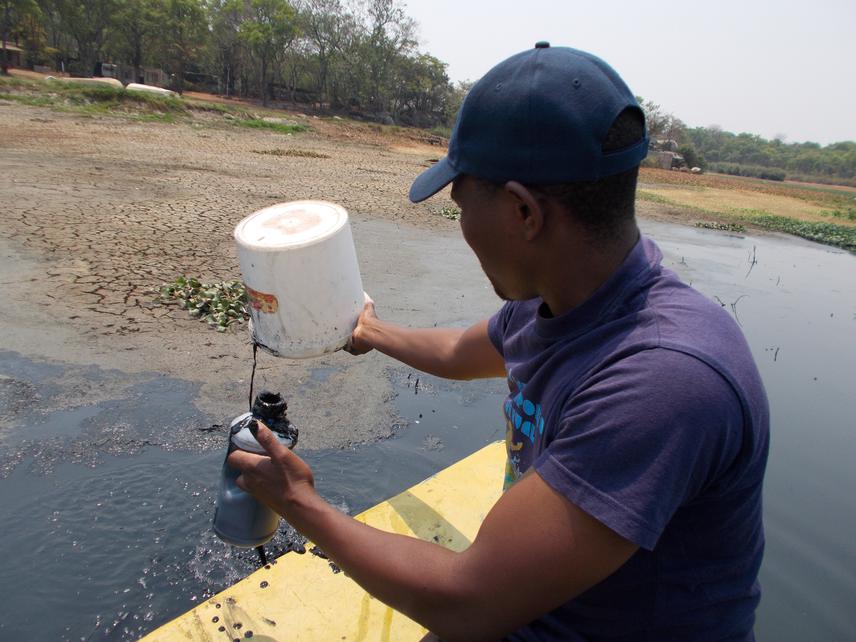Beaven Utete
This study aims at providing baseline ecological distribution, and conservation status of the extremophile turquoise killifishes and related species in temporary pans in the Gonarezhou National Park, Zimbabwe.

Human development through road construction, boom construction, livestock and wildlife trampling, permanent water pumping and bulldozing for tsetse fly and malaria control has destroyed temporary pans which are ecological habitats for the narrowly restricted and endangered yet short lived killifish Nothobranchius furzeri Jubb, 1971 in the lowveld region of Zimbabwe. This turquoise killifish primarily feeds on arthropods and insects and mainly targets mosquito and tsetse fly larvae which breed mainly in temporary pans and therefore has the potential to play a prominent in reducing transmission of malaria and spread of tsetse fly into the peripheral human communities living adjacent to the Gonarezhou National Park. However, there has been no ecological and scientific evidence to detail the role played by the turquoise killifish in temporary pans in the Gonarezhou National Park and its adjacent communities in the lowveld region of Zimbabwe. This project documents the ecological environmental implications of turquoise killifish in temporary pans in the lowveld region with a long term objective of instigating conservation awareness of both the turquoise killifish and preservation of their habitat i.e. the temporary pans. The view and focus being to determine and investigate the trade-off between turquoise killifish conservation in tandem with temporary pans preservation against human socio-ecological implications.
This project aims: to determine and document the ecological environmental implications of turquoise killifish in temporary pans in the lowveld region of Zimbabwe, to understand and document the local perspective on the significance of temporary pans as a habitat of socio-economic significance, and to instigating conservation awareness of both the turquoise killifish and preservation of their habitat i.e. the temporary pans in the lowveld region of Zimbabwe. Ultimately this project is expected to determine and document the ecological significance of the short lived turquoise killifish in its natural habitat i.e. the temporary pans and understand the perceptions of the local communities on the need to preserve the temporary pans. It aims to kickstart the formulation of a national awareness of the ecological and socio economic significance of temporary pans and the killifish and other related inhabitant aquatic biota.